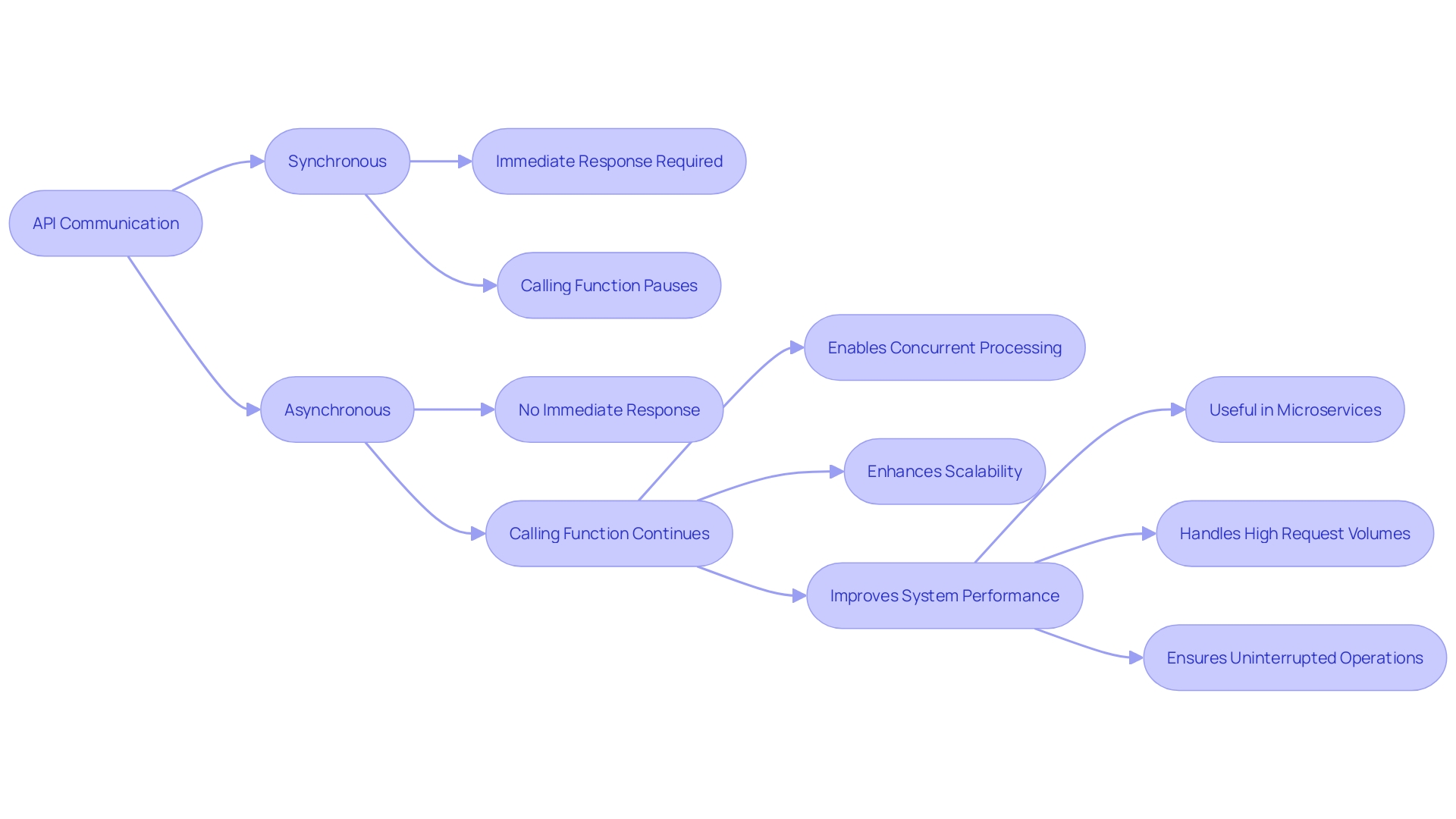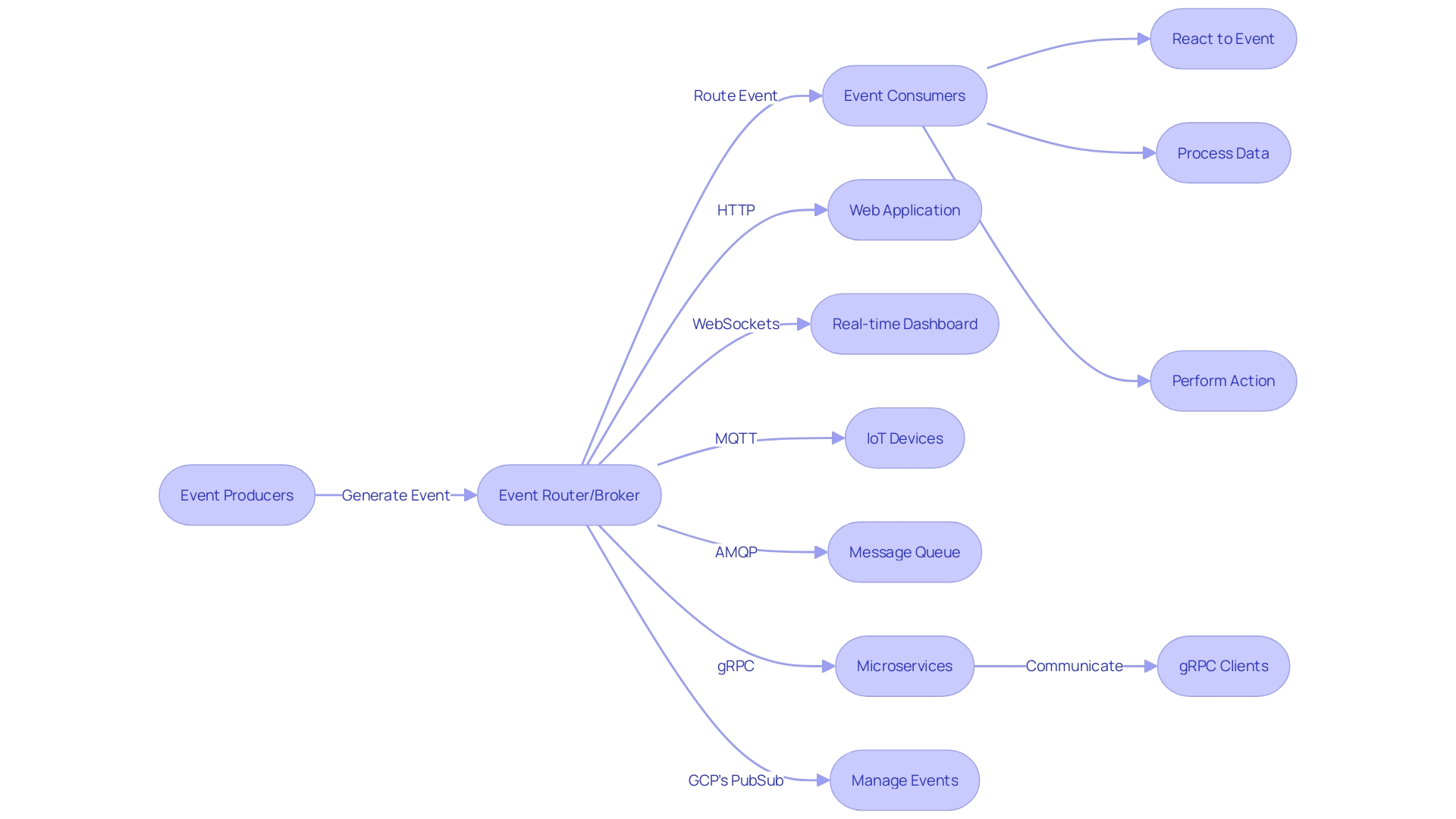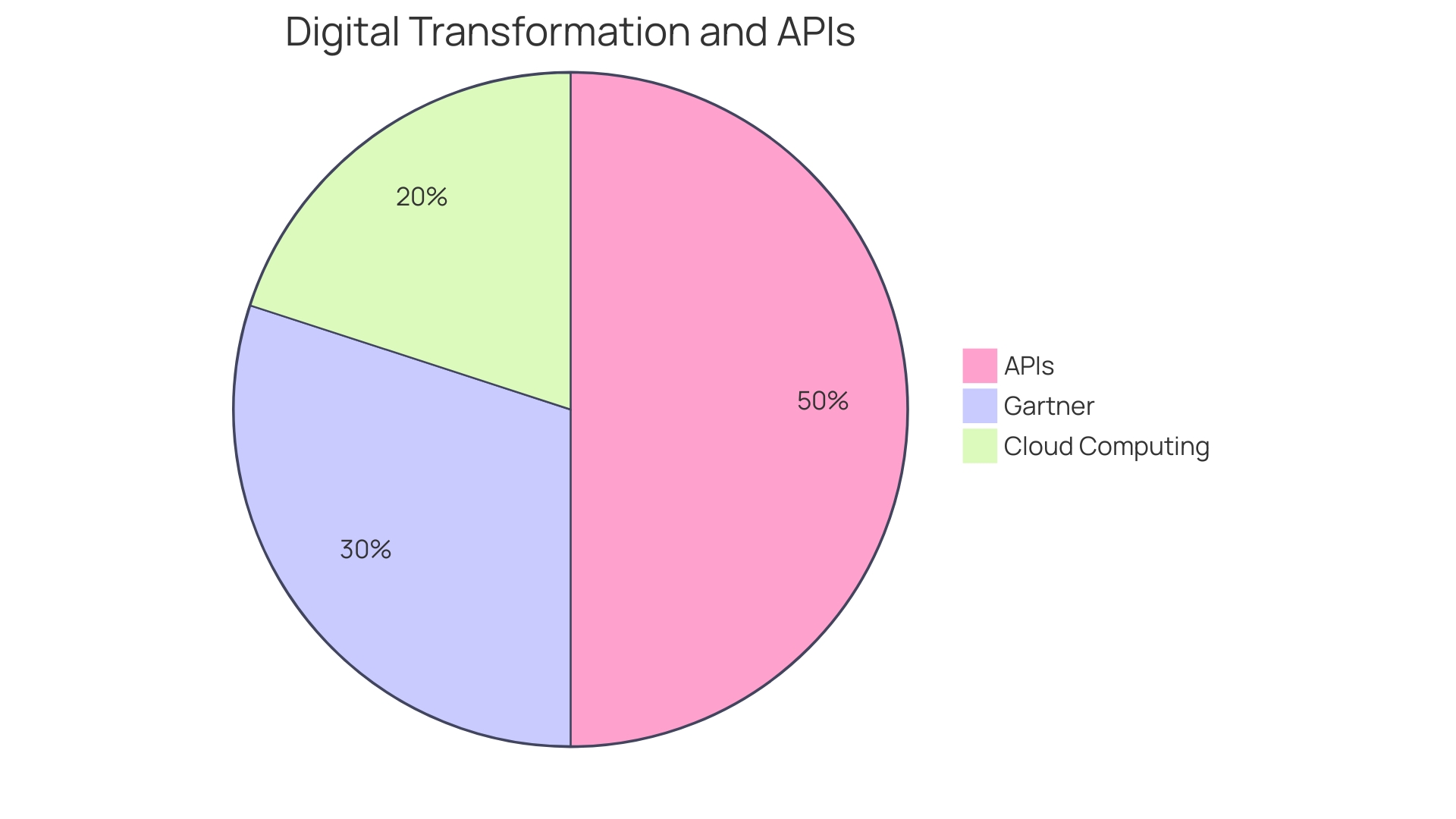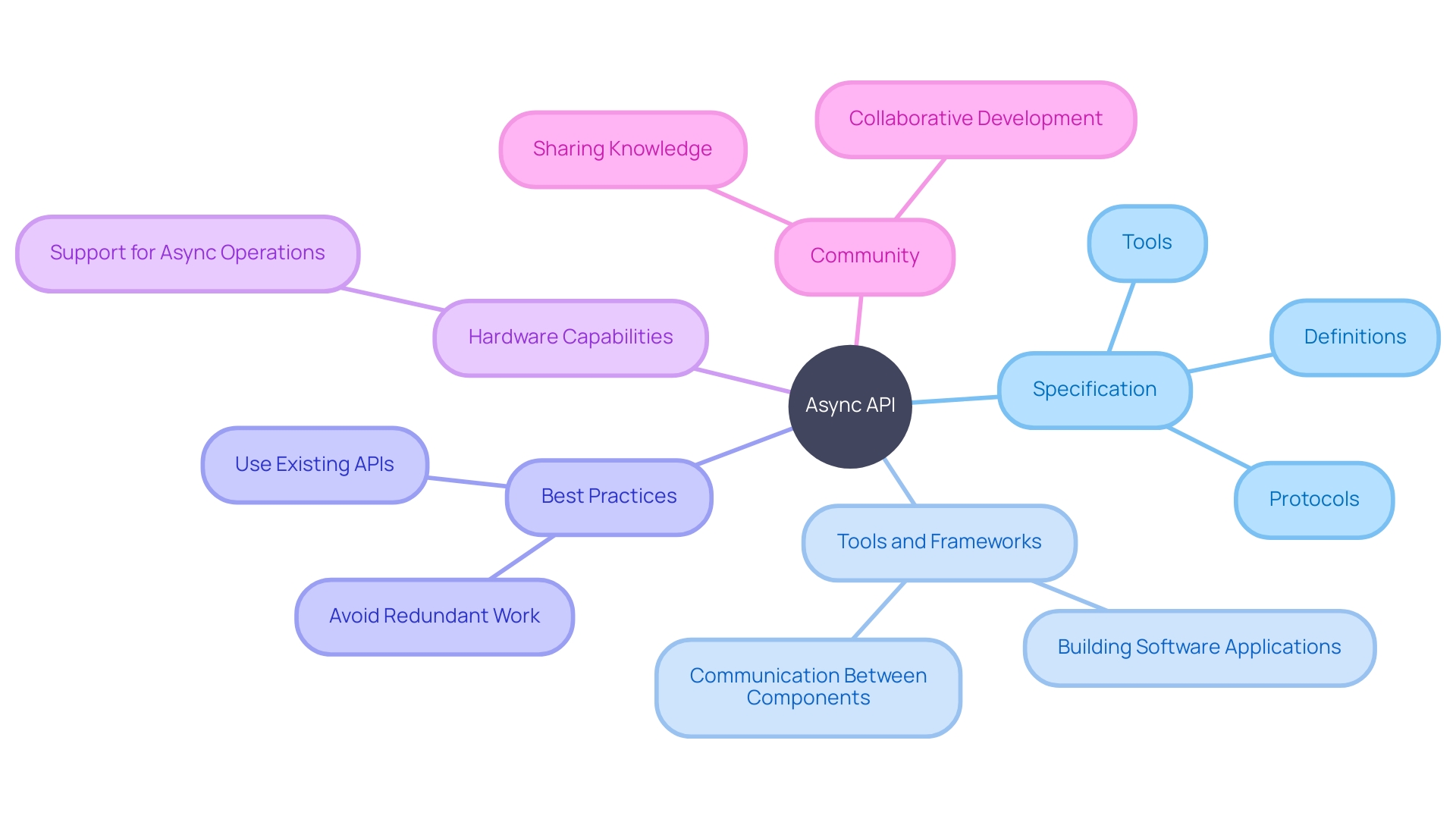Introduction
AsyncAPI: Revolutionizing Event-Driven Architectures for Maximum Efficiency and Productivity
In today's fast-paced digital landscape, event-driven architectures (EDAs) are gaining momentum for their ability to enhance system resilience and reduce latency. However, effectively managing asynchronous communication among services within these architectures can be a challenge. That's where AsyncAPI comes in.
AsyncAPI is a framework that empowers developers to meticulously define the messages, channels, and interaction protocols within event-driven systems. By offering a structured approach to documenting asynchronous communication, AsyncAPI enables more efficient and reliable service interactions. It's a game-changer for organizations looking to streamline their API development process and maximize efficiency.
By embracing AsyncAPI, developers can build systems that are not only more resilient and flexible but also capable of processing and responding to events in real-time. This paradigm shift is transforming software development, and with the growing support for AsyncAPI, the journey towards efficient, event-driven systems is becoming more accessible than ever.
In this article, we'll explore the key differences between asynchronous and synchronous APIs, the protocols supported by AsyncAPI, its use cases, benefits, and challenges. We'll also delve into best practices and considerations for implementing AsyncAPI. So, whether you're a developer, integrator, or simply interested in the world of event-driven architectures, this article will provide valuable insights into how AsyncAPI can revolutionize your approach to API development.
Let's dive in and discover how AsyncAPI is revolutionizing event-driven architectures for maximum efficiency and productivity.
What is Async API?
AsyncAPI is revolutionizing the way developers create and maintain APIs for event-driven architectures, offering a structured approach to documenting asynchronous communication among services. This framework empowers developers to meticulously define the messages, channels, and interaction protocols within event-driven systems, fostering more efficient and reliable service interactions.
Event-driven architectures (EDAs) are gaining momentum due to their capacity to enhance system resilience and reduce latency. These architectures rely on asynchronous events, which represent significant state changes within the system. EDA enables components to function independently, responding to events as they occur, without the need for a synchronous, blocking request-response pattern.
In the world of microservices, AsyncAPI is particularly beneficial for one-to-one interactions, where a single service handles each client request. It supports dynamic scheduling, allowing tasks to be scheduled at any time, with the flexibility to run on a cron schedule or at fixed intervals. The scheduler is designed to prioritize tasks and adapt to changes dynamically, making it well-suited for event-driven systems that require responsive and non-blocking communication patterns.
The adoption of AsyncAPI represents a step toward a unified platform for event-driven integration. It allows organizations to seamlessly integrate evented systems and applications into their existing application networks, thereby simplifying the journey toward a fully event-driven architecture.
By leveraging AsyncAPI, developers and organizations can build systems that are not only more resilient and flexible but also capable of processing and responding to events in real-time. This paradigm shift is transforming software development, and with the growing support for AsyncAPI, the journey towards efficient, event-driven systems is becoming more accessible.
Key Differences: Asynchronous vs. Synchronous APIs
To tap into the full potential of Async API, one must grasp the essence of asynchronous versus synchronous communication. In the synchronous realm, APIs expect and wait for immediate responses, effectively pausing the execution of the calling function until the response arrives. Contrast this with asynchronous APIs, which liberate the calling function to proceed with other tasks, not requiring it to idle while awaiting a response.
This non-blocking nature is pivotal in situations demanding high throughput, as it facilitates concurrent processing, thereby amplifying both scalability and system performance.
For instance, consider a scenario involving microservices where a critical service hinges on a third-party API. When an event occurs, the service reaches out to the API, processes the response, and then moves on to acknowledge the event. In a synchronous setup, reaching a rate limit—such as the API's stipulated 100 requests per minute—could result in a cascade of 429 error responses, severely disrupting operational flow.
However, adopting asynchronous communication allows the system to better handle such intense request volumes by not stalling for each response, ensuring smoother, continuous operations.
Moreover, as highlighted by industry experts, the shift from synchronous to asynchronous systems is not merely a technical preference but a strategic imperative. It's about removing the wait times that users face, especially when operations extend beyond a few seconds. This approach is not just about adhering to modern software development paradigms but also about enhancing the user experience by making systems more responsive and less prone to bottlenecks.
Even though asynchronous APIs can significantly optimize data processing, understanding when and how to use them is crucial. They shine in distributed systems dealing with immense data volumes, where efficiency directly influences the end-user experience. Embracing asynchronous communication in such environments isn't merely a choice; it's essential for maintaining a competitive edge and ensuring customer satisfaction, as it directly boosts productivity and saves valuable time.

Protocols Supported by Async API
In the realm of Event-Driven Architecture (EDA), asynchronous communication is paramount. This approach allows systems to respond nimbly to an array of events—akin to a dynamic conversation that flows without pause for interpretation. Among the conduits for this communication are protocols such as HTTP, WebSockets, MQTT, and AMQP, serving as the linguistic common ground that enables diverse system components to interact effectively.
The agility of these protocols is critical in an EDA, where events—changes in state that signal something noteworthy within the system—are produced, detected, consumed, and reacted to. Just as in a gathering where multiple languages are spoken, a shared language must be found; in computing, this shared 'language' is provided by these protocols, allowing for seamless data serialization and interaction.
Consider the case where microservices communicate via gRPC and events are managed through a platform like GCP's PubSub. In this setup, a critical microservice reliant on a third-party API reacts to published events by making API calls, processing the responses, and acknowledging the events. It showcases the real-time, asynchronous processing at the core of EDA, where systems don't wait passively for instructions but instead engage actively with the flow of operations.
As the internet evolves, the proliferation of protocols like HTTP/3 and QUIC, with their rapid adoption, underscores the necessity for modern systems to adapt and utilize protocols that accommodate the demands of today's real-time, interconnected environments. The choice of protocol may vary based on the situation at hand, whether it's the full-duplex communication of WebSockets or the tailored features of MQTT for IoT applications, each protocol's architecture, message formats, and quality of service are meticulously crafted to cater to the diverse needs of the digital ecosystem.
In the ever-evolving landscape of software development, the utilization of these protocols within the EDA framework can lead to the creation of robust and adaptable architectures that are equipped to handle an array of events and messages, thus propelling productivity and efficiency to new heights.

Use Cases for Async API
Asynchronous API design is a cornerstone of modern software development, facilitating real-time interactions in systems where immediate responsiveness is paramount. This approach shines in event-driven architectures, such as those found in Internet of Things (IoT) deployments, live analytics, chat services, and messaging infrastructures. By its nature, asynchronous processing allows for events to be handled as they occur, without the need for a coordinated sequence, thereby enabling a system to process data instantaneously and continue operations without delay.
Take, for example, the operations within an OLTP database system, which must manage transactional data with precision and atomicity. Just as it is critical for a bank to execute a wire transfer as a single, atomic operation to prevent any loss of funds, asynchronous APIs must ensure that the flow of events within such real-time applications is managed with similar reliability and integrity.
Moreover, considering the technical challenges identified in platforms like Spotify's Backstage, asynchronous APIs must be flexible and maintainable, avoiding rigid data models and manual data ingestion that could lead to information silos and outdated data. Async APIs, therefore, support a dynamic infrastructure that can evolve with the needs of an application without compromising on the speed and reliability of real-time data communication.
While WebSockets are a popular choice for implementing real-time features due to their full-duplex communication capabilities, they are not the only option. The suitability of WebSockets or other real-time technologies such as Server-Sent Events (SSE) or long polling must be carefully considered based on the specific requirements of each use case.
In summary, asynchronous API design is essential for applications demanding real-time data exchange, providing the backbone for a multitude of interactive, user-centric applications that thrive on immediate and reliable communication.
When to Use Async API
As we navigate the intricate landscape of modern software architecture, Async API emerges as a crucial facilitator of asynchronous data processing, where events are managed independently of one another. This approach is particularly beneficial in handling scenarios with high message throughput or when engaging in parallel computing tasks. For instance, TotalEnergies Digital Factory has harnessed the power of Async API to revamp its digital infrastructure, leading to the development of over 80 digital solutions deployed across 25 countries.
Such a transformation emphasizes the ability of asynchronous communication to improve system responsiveness and maximize resource efficiency.
Optimal performance and scalability are not mere buzzwords but tangible outcomes as demonstrated by the digital strides made by TotalEnergies. By integrating Async API into their systems, they have achieved a consensus among their developers, with 100% agreeing on the seamless collaboration facilitated by such practices. However, these advancements are not without their challenges, as evidenced by Spotify's Backstage platform.
The issues encountered there, such as a rigid data model and manual data ingestion, underscore the necessity for a thoughtful implementation of Async API to avoid inefficiencies and complexities in API development. In essence, when designed with precision, Async API is not just an option but a necessity for businesses like TotalEnergies that seek agility and resilience in their digital endeavors.
Async API: Documentation for Event-Driven Systems
The Async API specification stands as a beacon of clarity for event-driven architectures, delineating the structure, behavior, and intricacies of APIs with precision. It is a cornerstone for developers, integrators, and users alike, offering a well of knowledge that paves the way for fluid integration and fosters a harmonious collaboration across various teams and stakeholders.
As our digital infrastructure evolves, with companies adopting distributed systems and microservices, the need for asynchronous data processing has escalated. In scenarios where immediate responses are non-negotiable, asynchronous processing allows events to be handled in real-time, ushering in a new level of efficiency in data handling. It's the backbone of systems that must scale dynamically, responding to events as they unfold without the burden of coordination.
Embracing this paradigm, companies are transitioning from traditional meeting-heavy communication channels to a documentation-centric approach. Knowledge is meticulously chronicled, ensuring that every team member, or customer, can independently navigate the intricacies of the company, product, or codebase. This shift to asynchronous communication is epitomized by strategies like using issue templates for uniformity and adopting written Request For Comments (RFC) for planning.
In this context, Async API emerges as a powerful tool, not only as a means to document APIs but also to encode the philosophy of asynchronous communication into the very fabric of our digital solutions. As highlighted in educational videos like those discussing AWS IoT Core or Lambda's scaling capabilities, the real-time processing of data is essential for modern web applications. Async API is more than just documentation; it's a reflection of a company's commitment to an efficient, event-driven future.
Renowned figures in the tech industry have echoed this sentiment, emphasizing that events within systems serve as a form of API. They enable systems to notify each other, distribute data, and communicate beyond their logical boundaries. This perspective reinforces the idea that documentation, like that provided by Async API, is indeed an API itself—a contract with the outside world that must be clear, comprehensive, and evolve with the needs of the business.
Amidst this digital transformation, statistics reveal an undeniable truth: APIs are not just prevalent, but pivotal to organizational success. A staggering 93% of organizations recognize the relevance and necessity of APIs, while 86% acknowledge that without them, operational silos would be an unfortunate reality. This data underscores the integral role of APIs in enhancing data visibility and connectivity across diverse systems.
Async API, therefore, is not merely a tool but a symbol of an organization's agility and responsiveness to the ever-changing digital landscape, guiding seamless integration and collaboration across event-driven systems.

Benefits and Challenges of Async API
Asynchronous APIs are pivotal for enhancing system scalability, performance, and responsiveness. By embracing asynchronous communication, systems can efficiently process a large volume of requests in a non-blocking manner. This is especially important in event-driven architectures (EDAs), where components respond to state changes without waiting for other processes to complete.
For instance, in the development of a highly accurate billing system, we leveraged EDA to handle complex subscription events, such as subscription creation and updates to discount structures. Here, asynchronous processing played a crucial role in ensuring that billing calculations and notifications were triggered immediately upon event occurrences, without delays that could compromise the system's accuracy or customer satisfaction.
Despite the clear advantages, adopting Async API is not without its hurdles. The complexity of the system increases, necessitating a deep comprehension of EDA and the meticulous orchestration of asynchronous operations. Developers are often challenged to design and implement these systems with precision to avoid potential pitfalls.
In practice, asynchronous processing shines in scenarios like microservices, where immediate responses to requests are required. It's also integral to distributed systems that manage and store vast amounts of data, where efficient data processing directly impacts the end-user experience. Asynchronous processing allows for the handling of events as they happen, leading to more dynamic and responsive environments.
A recent example of asynchronous processing's impact can be seen with the beta release of TypeScript 4.9, which promises to streamline development with improved features like Intersection Reduction and Union Compatibility. Such advancements underscore the ongoing evolution of programming languages to support asynchronous operations, thereby enhancing developer productivity and system capabilities.
To sum up, while Async API can introduce complexity, its correct implementation within an EDA can lead to significant improvements in system efficiency and user experience. The key is to understand the intricacies of event-driven systems and to apply asynchronous processing where it can be most beneficial.
Getting Started with Async API
Delving into the world of Async API begins with understanding its specification, which serves as a blueprint for building event-driven architectures. Developers can initiate this process by constructing messages, channels, and protocols in alignment with the Async API schema. The landscape of available tools and frameworks is rich and supportive, offering resources to craft comprehensive documentation and validate API structures.
By adhering to the established best practices and industry standards, developers are empowered to create systems that not only scale with grace but also maintain reliability under the load of real-time events. This approach mirrors the ongoing evolution in hardware capabilities, such as the exponential growth in CPU cores, ensuring that software architecture keeps pace with technological advancements and meets the high-performance expectations of modern users. Asynchronous processing, crucial in distributed systems and microservices, allows for the immediate handling of events, thereby enhancing the efficiency and responsiveness of applications.
Adopting Async API is not just about adhering to technical specifications; it's about joining a vibrant community under open governance, contributing to a collective knowledge base, and sharing in the successes of leading global brands that have integrated Async API into their production environments.

Real-World Applications and Examples
The transformative power of Async API is evident across various industries, reshaping how real-time data is managed and utilized. For instance, in the IoT domain, companies like Optimotion have harnessed Async API to revolutionize their services. Under the leadership of CEO Guillermo Guereque, Optimotion's automated solutions now monitor and optimize chemical dispensing for water treatment, delivering compliance with government standards while ensuring efficiency and safety.
This is just one of the many cases where Async API has been pivotal in enabling devices to communicate effortlessly with cloud services, driving advancements in the industrial sector.
In the bustling world of finance, Async API is the cornerstone for real-time data streaming and event processing. It's the silent engine behind the seamless transactions and instant data feeds that empower financial analysts and traders to make informed decisions swiftly.
Moreover, the entertainment and communication realms are not untouched by the efficiency brought by Async API. Gaming platforms, chat applications, and messaging systems all rely on the swift interactions and notifications facilitated by this technology to engage users in a dynamic, real-time experience.
These applications are a testament to the versatility and reliability of Async API, aligning perfectly with the aspirations of an Efficiency Enthusiast seeking to drive productivity through innovative solutions. As we continue to navigate the digital world, Async API remains a crucial component for developing responsive and efficient systems that meet the high standards of today's tech-driven society.
Best Practices and Considerations
Efficient Async API practices are more than just a checklist; they're about understanding the subtleties of communication in a world where not all errors are created equal. By classifying errors based on their planned impact, developers can save themselves the headache of late-night debugging sessions. This strategic approach to error handling is crucial in crafting a resilient and user-friendly API.
In addition to error management, message validation plays a critical role in maintaining the integrity of communication. It's about ensuring that the messages exchanged adhere to predefined schemas and rules, which in turn helps avoid legal and regulatory pitfalls that can arise from regional differences in data handling.
Versioning is another cornerstone of a robust Async API. It allows for seamless transitions and adaptations as APIs evolve, ensuring that consumers are not left grappling with sudden, incompatible changes. This forward-thinking practice is akin to understanding the importance of response times in modern software development—both are about anticipating needs and scaling efficiently.
Security is not an afterthought but a foundational element of Async API design. It's the shield that protects against the vulnerabilities of an interconnected system, safeguarding data and services from potential breaches.
Performance implications cannot be underestimated. Whether it's dealing with high volumes of messages or complex event flows, an Async API must be designed with scalability at its core. This is echoed in the AsyncResult type, illustrating how an API can represent different states of an operation, from success to failure, without compromising progress.
Regular testing and monitoring are the pulse checks of any Async API. They ensure that the system remains healthy and responsive, ready to meet the demands of users and the dynamic nature of distributed systems. With the right approach, developers can create APIs that not only function smoothly but also elevate the user experience to new heights.
Conclusion
AsyncAPI revolutionizes event-driven architectures by offering a structured approach to documenting asynchronous communication. It empowers developers to define messages, channels, and protocols, resulting in efficient and reliable service interactions. With AsyncAPI, systems become more resilient, flexible, and capable of real-time event processing.
The key differences between asynchronous and synchronous APIs highlight the advantages of adopting asynchronous communication. Asynchronous APIs improve scalability and system performance by allowing the calling function to proceed with other tasks. This approach is crucial for high throughput and immediate responsiveness.
AsyncAPI supports protocols like HTTP, WebSockets, MQTT, and AMQP, enabling effective interaction among system components. The choice of protocol depends on the use case, ensuring adaptability and robustness in handling events and messages.
Asynchronous API design is essential for real-time data exchange, benefiting event-driven architectures, IoT deployments, live analytics, chat services, and messaging infrastructures. It enables handling events as they occur, ensuring instant data processing and uninterrupted operations.
AsyncAPI serves as a beacon of clarity, guiding seamless integration and collaboration in event-driven architectures. It represents an organization's commitment to an efficient, event-driven future, enhancing productivity and responsiveness to the changing digital landscape.
The benefits of AsyncAPI include enhanced system scalability, performance, and responsiveness. However, implementing AsyncAPI requires understanding event-driven system intricacies and precise orchestration of asynchronous operations.
Getting started with AsyncAPI involves understanding its specification, constructing messages, channels, and protocols, and adhering to best practices. AsyncAPI is a crucial component for developing responsive and efficient systems, meeting the high standards of today's tech-driven society.
Efficient practices for AsyncAPI include strategic error handling, message validation, versioning, security considerations, performance optimization, and regular testing and monitoring. These practices ensure resilience, integrity, and scalability, driving maximum efficiency and productivity.
In conclusion, AsyncAPI revolutionizes event-driven architectures by enabling structured documentation of asynchronous communication. It empowers developers to build resilient and flexible systems capable of real-time event processing. By embracing AsyncAPI, organizations achieve maximum efficiency and productivity in their API development processes.
Start revolutionizing your event-driven architecture with AsyncAPI today!
Frequently Asked Questions
What is Async API?
Async API is a framework designed to document and define asynchronous communication in event-driven architectures (EDAs), ensuring more efficient and reliable interactions between services. This approach allows systems to handle events as they occur rather than relying on synchronous request-response patterns.
How does Async API benefit developers and organizations?
Async API benefits developers and organizations by providing a structured framework for documenting asynchronous systems. This leads to more resilient, flexible, and real-time capable systems that can process and respond to events more efficiently, which is crucial in the landscape of microservices and event-driven systems.
What are the key differences between asynchronous and synchronous APIs?
In synchronous communication, APIs wait for immediate responses, pausing the calling function until the response arrives. Asynchronous APIs allow the calling function to continue with other tasks without idling for a response, enabling concurrent processing and improving scalability and system performance.
What protocols are supported by Async API?
Async API supports various protocols for asynchronous communication, including HTTP, WebSockets, MQTT, and AMQP. These protocols enable diverse system components to interact effectively, allowing systems to respond to events promptly and maintain continuous operations.
When should you use Async API?
Async API is ideal for systems with high message throughput, parallel computing tasks, and those requiring immediate responsiveness. It's essential in distributed systems dealing with large volumes of data, where efficient data processing directly affects the end-user experience.
What are some real-world use cases for Async API?
Real-world use cases for Async API include IoT deployments, live analytics, chat services, messaging infrastructures, and any application demanding real-time data exchange. It's also used in financial services for real-time data streaming and in the entertainment industry for gaming and communication platforms.
What challenges might you encounter when adopting Async API?
When adopting Async API, you may face challenges such as increased system complexity and the need for a deep understanding of EDA. Developers must design and implement systems carefully to avoid potential pitfalls associated with asynchronous operations.
How do you get started with Async API?
To get started with Async API, understand the Async API specification and use it to define messages, channels, and protocols for your event-driven architecture. The community provides various tools and frameworks to help document and validate your API structures.
What are the benefits of using Async API in event-driven systems?
Using Async API in event-driven systems can significantly improve system scalability, performance, and responsiveness. It allows for non-blocking processing of a large volume of requests and ensures that components can respond to state changes promptly.
What are the best practices and considerations when working with Async API?
Best practices when working with Async API include strategic error handling, message validation, careful versioning, prioritizing security, designing for performance, and regular testing and monitoring. These practices help maintain the integrity, reliability, and user-friendliness of the API.




